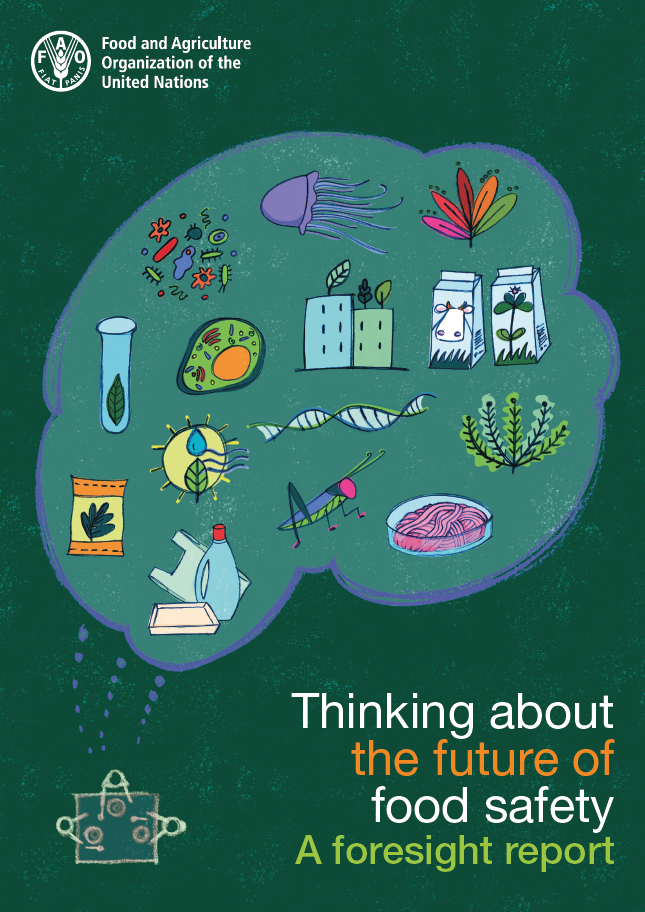"Agrifood systems are undergoing a transformation with the aim to provide safer, more affordable, and healthier diets for all, produced in a sustainable manner while delivering just and equitable livelihoods: a key to achieving the UN’s 2030 Agenda for Sustainable Development. However, this transformation needs to be executed in the global context of major challenges facing the food and agriculture sectors, with drivers such as climate change, population growth, urbanization, and natural resources depletion compounding these challenges.
Food safety is a keystone to agrifood systems and all food safety actors need to keep pace with the ongoing transformation while preparing to navigate the potential threats, disruptions, and challenges that may arise. Foresight in food safety facilitates the proactive identification of drivers and related trends, both within and outside agrifood systems, that have implications for food safety and therefore also for consumer health, the national economy, and international trade. Early identification and evaluation of drivers and trends promote strategic planning and preparedness to take advantage of emerging opportunities and address challenges in food safety.
In this publication, the FAO Food Safety Foresight programme provides an overview of the major global drivers and trends by describing their implications for food safety in particular and for agrifood systems by extrapolation. The various drivers and trends reported include climate change, changing consumer behaviour and preferences, new food sources and production systems, technological advances, microbiome, circular economy, food fraud, among others."
The document is prepared by FAO in English language. Click here to access the document.
Source: FAO. 2022. Thinking about the future of food safety - A foresight report. Rome.
Illustration: Chiara Caproni / FAO



